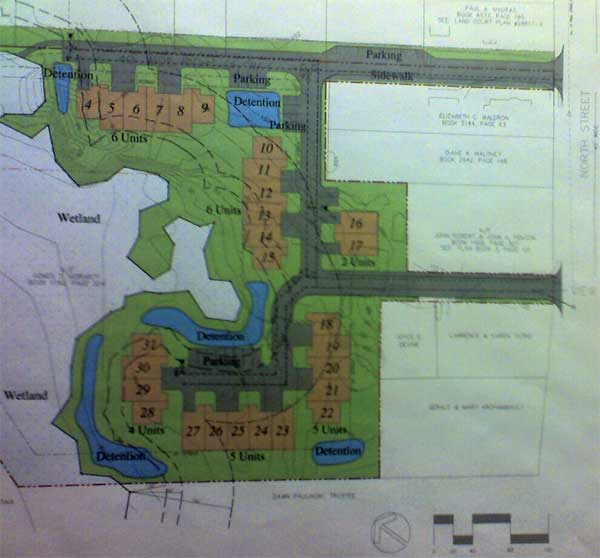Recent rains have once again underscored the limits of artificial stormwater management systems. The July 24 Springfield Republican reports that recent rains overwhelmed the detention pond at the Jewish Community Center:
Some cities and towns have seen a mind-boggling 5 to 7 inches of rain over the last 36 hours, [abc40 meteorologist Eric] Fisher said…
Springfield firefighters…are at the Jewish Community Center pumping out some 2 to 3 feet of water that has accumulated in the building’s basement…
Fire Department spokesman Dennis G. Leger said the flooding at the 1160 Dickinson St. building has been caused by overflow from the facility’s retention pond…
Mark Dindas, executive director of the center said similar flooding happened during heavy rains several years ago.
The detention pond, Dindas said, can’t handle such torrential downpours and that the problem will have to be corrected.
See also:
Alex Ghiselin, Letter to Gazette: “Don’t let development encroach on our wetlands”
The
failure of the storm water system built as a part of the Northampton
High School renovation six years ago illustrates why protecting
wetlands is so important. Silt has filled the retention pond so there
is no capacity to slow a storm surge which now flows unimpeded into the
Mill River and contributes to flooding downstream. This accumulated
silt also raised the water table and spills ground water into nearby
basements…
Snow and Slush Expose Limits of Storm Drains
Easthampton Flooding Hazard: Snow-Clogged Storm Drains
Kohl’s Condo Proposal: Where Things Stand, and What You Can Do
Kohl Construction condo proposal showing detention pools. At the base of the wetland lies Millyard Brook:
Gazette: “Region’s storms going to extremes, report finds” (12/5/07)
Extreme downpours and snowstorms are rising in frequency nationally, with the highest increases in New England…
Massachusetts saw a 67 percent rise in severe storms during [1948-2006], trailing only Rhode Island and New Hampshire…
…the top 10 severe storms in the state all occurred in the past decade…
Bloomberg: “Climate Change May Muddy Better-Than Bottled New York Tap Water” (7/7/08)
“One of the effects of climate change is to have more frequent and more intense weather events,” Mugdan said in a June 30 interview. [Walter Mugdan is water division director for the US Environmental Protection Agency]
…There are twice as many downpours of 2 inches or more now as 50 years ago, said Art DeGaetano, director of the Northeast Regional Climate Center at Cornell University in Ithaca, New York. Carbon dioxide, a by-product of burning coal and oil, causes the atmosphere to hold more water vapor, leading to heavier rains.
EPA: Wetlands and Flood Protection
Wetlands
within and downstream of urban areas are particularly valuable,
counteracting the greatly increased rate and volume of surface-water
runoff from pavement and buildings…
A one-acre wetland can
typically store about three-acre feet of water, or one million gallons.
An acre-foot is one acre of land, about three-quarters the size of a
football field, covered one foot deep in water. Three acre-feet
describes the same area of land covered by three feet of water. Trees
and other wetland vegetation help slow the speed of flood waters. This
action, combined with water storage, can actually lower flood heights
and reduce the water’s destructive potential. (Source: EPA)
